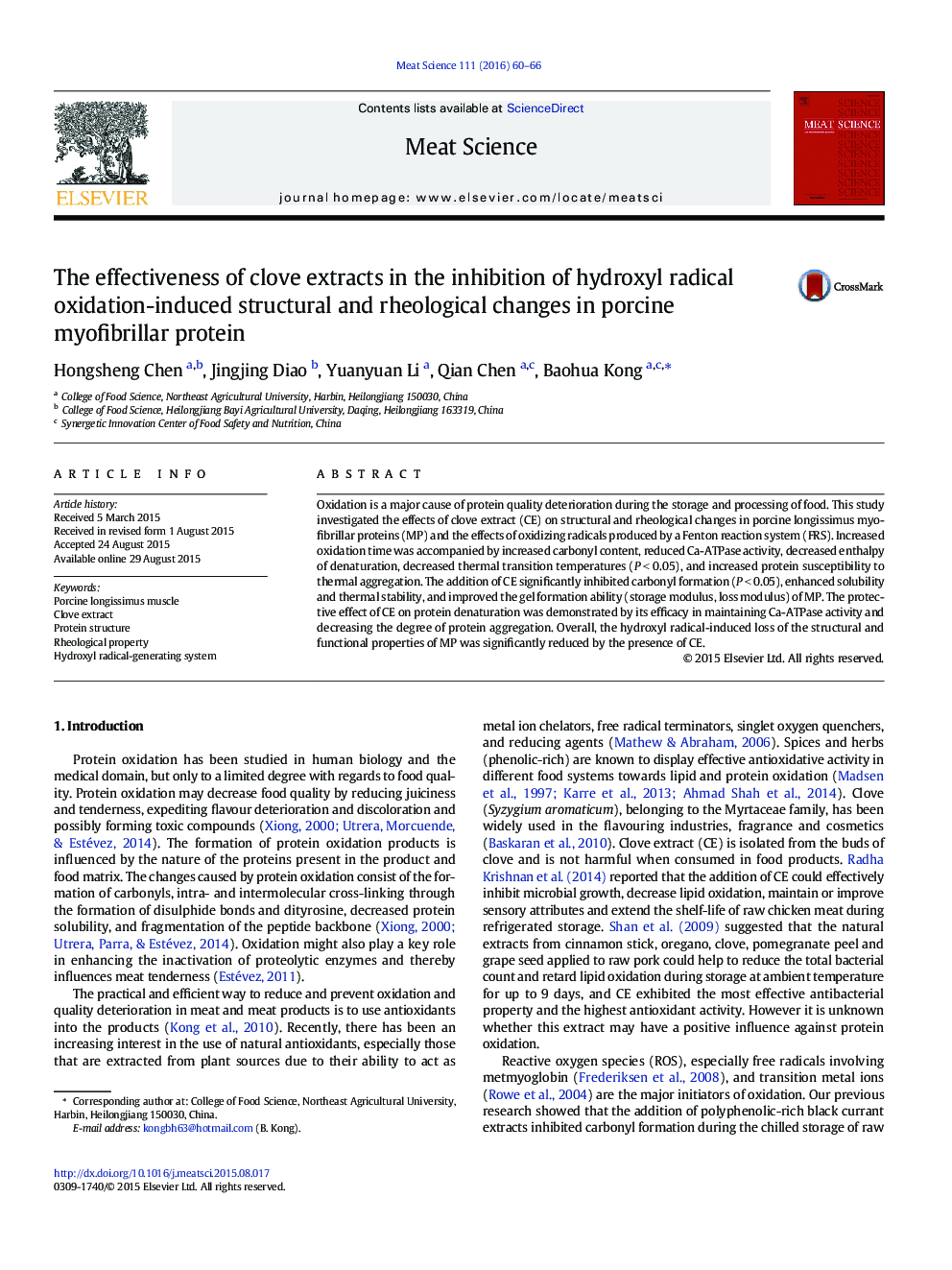| کد مقاله | کد نشریه | سال انتشار | مقاله انگلیسی | نسخه تمام متن |
|---|---|---|---|---|
| 2449573 | 1554083 | 2016 | 7 صفحه PDF | دانلود رایگان |
• Effects of clove extract on oxidation and structural changes in MP were investigated.
• Oxidation led to myofibrillar protein structure and functionality deterioration.
• The addition of CE significantly inhibited oxidation and improved functionality.
• The role of CE on MP was demonstrated by Ca-ATPase activity and protein stability.
Oxidation is a major cause of protein quality deterioration during the storage and processing of food. This study investigated the effects of clove extract (CE) on structural and rheological changes in porcine longissimus myofibrillar proteins (MP) and the effects of oxidizing radicals produced by a Fenton reaction system (FRS). Increased oxidation time was accompanied by increased carbonyl content, reduced Ca-ATPase activity, decreased enthalpy of denaturation, decreased thermal transition temperatures (P < 0.05), and increased protein susceptibility to thermal aggregation. The addition of CE significantly inhibited carbonyl formation (P < 0.05), enhanced solubility and thermal stability, and improved the gel formation ability (storage modulus, loss modulus) of MP. The protective effect of CE on protein denaturation was demonstrated by its efficacy in maintaining Ca-ATPase activity and decreasing the degree of protein aggregation. Overall, the hydroxyl radical-induced loss of the structural and functional properties of MP was significantly reduced by the presence of CE.
Journal: Meat Science - Volume 111, January 2016, Pages 60–66
